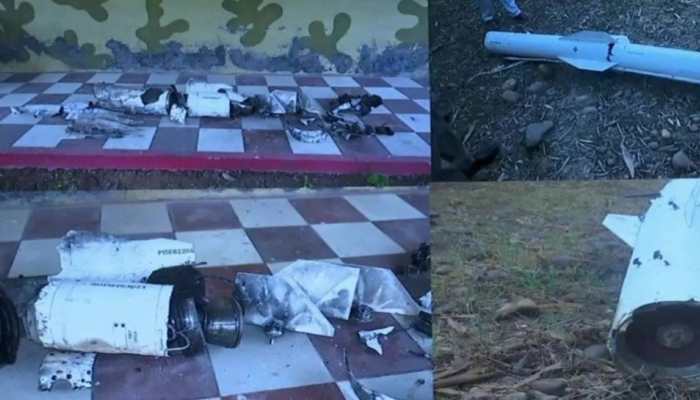From Pakistan's Flop To Iran's Front Line: Why China's HQ-9B Air Defense System Is Under Scrutiny?
Story by Nitin.Kumar
• 1h•
3 min read
View attachment 19803
From Pakistan's Flop To Iran's Front Line: Why China's HQ-9B Air Defense System Is Under Scrutiny?
China has reportedly transferred its HQ-9B air defense system to Iran. This move has attracted international attention, especially considering the system's troubled history in Pakistan. The transfer, believed to be a trade for oil, comes as Iran aims to strengthen its air defenses against regional threats.
The HQ-9B is a long-range air defense system designed in China. It takes inspiration from Russia's S-300 and includes some American and Israeli technologies. The system is built to intercept aerial threats, including enemy aircraft, drones, cruise missiles, and some ballistic missiles. It uses radar to locate targets and then launches its own missiles to destroy them mid-air. The HQ-9B can engage 8 to 10 targets at once within a range of 250 to 300 km.
Pakistan's Troubled Experience With HQ-9B
Pakistan integrated the HQ-9B into its military in 2021, promoting it as a strong tool against India's increasing air power, which includes Rafale jets and BrahMos missiles. However, the system has performed poorly on several occasions, most notably during India's "Operation Sindoor" in May 2025.
During "Operation Sindoor," India carried out precision strikes on terrorist targets in Pakistan and Pakistan-occupied Kashmir (PoK). These strikes involved advanced weaponry, including BrahMos missiles, French SCALP cruise missiles, and Israeli Harop drones. Despite the HQ-9B's presence, it reportedly failed to intercept any of these threats. Reports indicated that the Indian attacks were so precise that they also destroyed an HQ-9B battery near Lahore.
The system's failures extended beyond "Operation Sindoor." In 2024, when Iran targeted Pakistan's Balochistan with missile and drone strikes, the HQ-9B again showed no response.
Several reasons are put forward for the HQ-9B's failures in Pakistan:
Lack Of Training: Pakistani military personnel may not have received sufficient training to operate the complex system.
Jamming And Stealth Technology: India's use of electronic warfare and stealth missiles might have evaded or confused the HQ-9B's radar.
Technical Limitations: Some experts believed the HQ-9B may not be fully capable of intercepting high-velocity missiles, like the BrahMos.
Maintenance Issues: The system's high maintenance costs and possible shortages of spare parts in Pakistan could have hurt its operational readiness.
These repeated failures led to significant criticism in Pakistan and even on Chinese social media, where the Pakistani military was described as "mute spectators," and the reliability of the HQ-9B was questioned.
China's Strategic Transfer To Iran
The news of China transferring the HQ-9B system to Iran came out in July 2025. This deal seems to be an exchange for oil, as US sanctions prevent Iran from making cash payments.
Why Iran Needs Air Defense: Iran faces serious geopolitical challenges and threats from powerful adversaries, such as Israel and the United States. Recent Israeli airstrikes on Iranian sites have highlighted the need for Iran to improve its air defense systems. The HQ-9B could offer vital long-range aerial defense.
Benefits For China:
Secure Oil Supply: The deal gives China a steady and potentially discounted supply of oil, which is essential for its economy.
Expanding Arms Market: China aims to increase its market presence in the arms trade. Providing the HQ-9B to Iran helps establish a foothold in the unstable Middle East.
Reputation Management: The HQ-9B's poor performance in Pakistan damaged China's credibility in defense technology. Deploying it in Iran allows Beijing to showcase the system's effectiveness, particularly against sophisticated Western military technology.
Israeli Concerns: Israel has expressed worries about this deal, as the HQ-9B could significantly boost Iran's ability to counter aerial threats.
Prospects For HQ-9B In Iran And India's Position
It remains uncertain whether the HQ-9B will perform better in Iran. Its past failures in Pakistan do not necessarily indicate that it is ineffective overall. Its success in Iran will depend on several factors:
Training And Maintenance: Iran will need to ensure thorough training for its personnel and may rely on China for maintenance and spare parts.
Adversary Technology: Both Israel and the U.S. have stealth aircraft and advanced missiles that might evade the HQ-9B's radar systems.
Operational Integration: Iran's ability to effectively integrate and use the system within its existing defense framework will be essential.
For India, this development could raise concerns, especially given the complex nature of India-Iran relations. If Iran successfully deploys the HQ-9B, it could shift the balance of power in the Middle East. However, India's own strong air defense systems, including the S-400 and Akash missile systems, are designed to counter a wide range of aerial threats, positioning it to handle any potential implications.


 World Affairs
World Affairs)
















